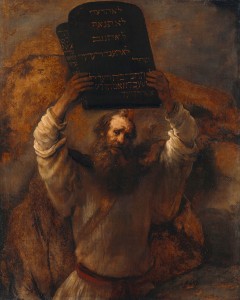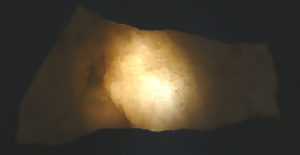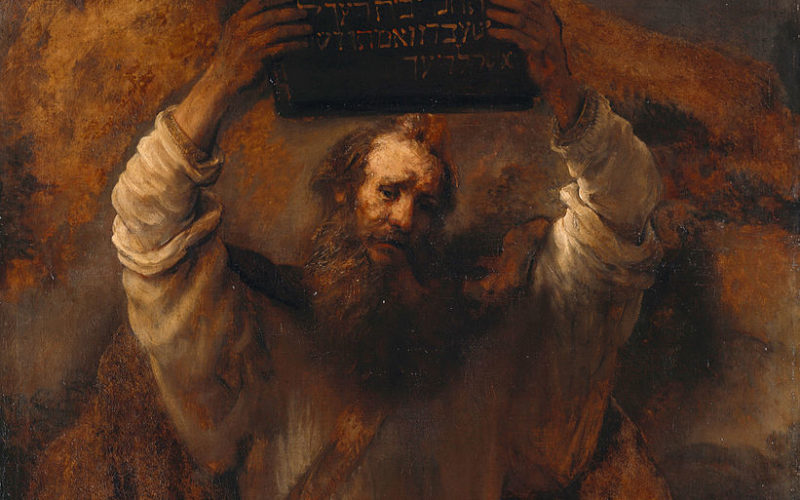The Greatest Mistranslation in History!
 Pass this on. Shout it from the rooftops. The Bible never mentions the “Ten Commandments”!
Pass this on. Shout it from the rooftops. The Bible never mentions the “Ten Commandments”!
It’s true. One can argue that this is the greatest mistranslation in history. Let me explain: the Torah i.e., the “Five Books of Moses”, has 613 commandments embedded in it. Over 50% of them involve the sacrificial ritual that used to be conducted first in the Israelite tabernacle in the desert and then in the Temple of Jerusalem (the First and Second Temples stood on the same site – Mount Zion – for approximately 1,000 years!) According to the Torah, 10 of the 613 commandments were inscribed on stone tablets by the finger of God. When the Israelites sinned, worshipping a golden calf at the foot of Mount Sinai, Moses broke the original God written commandments.
After the sinners had been dealt with and God forgave the children of Israel, Moses created a new set of tablets, this time inscribed by him. According to Rabbinic tradition, both the broken and the new tablets were set in a special box – the Ark of the Covenant – which was the centerpiece of the Holy of Holies. The tablets and the Holy Ark (as in “Raiders of the Lost Ark”) disappeared from history when the First Temple of Jerusalem was destroyed (586 BCE). According to Jewish legends, the prophet Jeremiah hid the Ark and the tablets before the invading Babylonians managed to get into the Temple (II Maccabees 2:4-8). During the Second Temple period, the Ark was not in the Holy of Holies, by then it had literally disappeared from history. But what of the writings inscribed on it?
Typically, the “Ten Commandments” are treated as the top 10 of the 613 commandments of the Torah. Even irreligious people will say “I’m not religious, but I believe in the Ten Commandments”. Most people remember; “Thou Shalt Not Murder” and “Thou Shalt Not Steal” but the other commandments, especially the one about the Sabbath, have been largely forgotten. Anyway, let’s return to the greatest mistranslation in history.
In the original Hebrew, the Torah refers to what is normally rendered as the “Ten Commandments” as “Aseret haDibrot”, which literally translates as the “Ten Sayings”. Though they are commandments, they are never referred to as such. Why? Because it seems that the Torah wants to separate these Ten Commandments from the others, and mark them out as ten “principles” out of which the commandments flow. Meaning, the most proper translation of “Aseret haDibrot” is the “Ten Principles”. Cecil B. DeMille notwithstanding, all the translations of the Bible have it wrong. Some of them may footnote the fact that they are mistranslating, but the plain truth is that the only way to translate “Aseret haDibrot” is the “TEN PRINCIPLES”.
Why should this matter? It should matter a lot because “commandments” are things that people easily ignore. Nobody wants to be pushed around. All the children of God feel rebellious at some point. But “principles” are difficult to ignore. They gnaw at you, they burrow into your mind and they activate insight and consciousness. It’s hard to ignore ten God-given “principles”. In the gulf between the Hebrew and the English, the French and the Spanish, and all modern languages, much suffering has occurred. It’s hard for the world to come back to the “Ten Commandments”. It’s easier, I think, to wrestle with the “Ten Principles”.

As an archaeological footnote, the Torah says that Moses inscribed the commandments on stone tablets. It doesn’t mention chisels or any other sculptor’s tool. In other words, the stone must have been soft. The Torah also says that there was a stream that flowed from the top of Mount Sinai – where the tablets were written – to the bottom (Deuteronomy 9:21). The Talmud says that the tablets were transparent and you could see the letters from both sides. My recent blog about the true Mount Sinai – Hashem el-Tarif in the Sinai desert – states that at the top of the mountain there are the traces of a now dry stream. The clue that there was once a stream there is “travertine”, a carbonate deposit left behind by rivulets of clear water. Travertine is transparent and soft. Put it up to the light, and you can see letters on both sides. You can scratch it with a hard rock and it’s only deposited by pure water. So there you have it! The “Ten Principles” must have been written on travertine. It is said that when the Messiah comes, the “Ten Principles” will be rediscovered.

